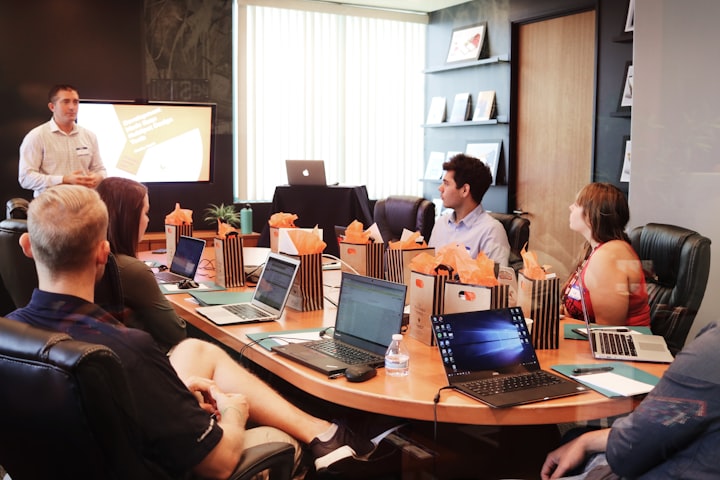
As a Communication Consultant in the nonprofit sector, I often sit in large meetings with people of different cultures, experiences, and passions. It is an incredible honor to make a difference in communities all around the globe.
At the start of my career, I served on a university board to provide input on cultural matters. Students of varying backgrounds representing different campus sectors filled the board room — student-athletes, various academic leads, supervisors of college grade levels, religious leaders, etc. Together we problem solved for better educational pathways.
This time sparked a seed of interest that would carry into a successful career in the nonprofit sector. Together, although very different, we worked to solve complex problems. Every person at the table had a different life experience that provided unique contributions.
And while each person was valued for who they represented, they were also respected for their personality type. Personality types were diagnosed and engaged in promoting effective communication.
Here are some common ways to encourage effective communication in your next meeting through understanding and engaging personality types.
Detract from singular centrality.

We’ve all experienced it. You know, the meeting that has one person that dictates the entire conversation. Sometimes it’s arrogance, pride, or the need to make others feel small that causes this unfortunate series of workplace meeting dictations. However, sometimes an employee does not realize they are monopolizing input.
Prominent personalities tend to dictate conversations naturally. Not out of ill-intent but simply because that’s how their brain is wired. They are the wooers, and they are here to win you over. They are excellent at gaining new clients and presenting bid proposals. However, it can also feel overwhelming in problem-solving meetings.
To cut down centrality and promote multiple voices, here are some ways you can communicate to the big personality.
- “Great input! Let’s write that down. Does anyone else have ideas?”
- “Good insight. Let’s put that thought on hold and come back to it later. Does anyone else have a different perspective?”
- “I never thought of it that way. Does anyone else have a different insight?”
- “Great, let’s hear from the team. What do you guys think about (XYZ)?”
If you have a large team of mostly prominent personalities, here are some helpful ways to focus meetings.
- Diversify your team. Having multiple different personalities will help contribute to problem-solving communication.
- Make rules for communication. To ensure all individuals are respected in the communication process, establish ground rules before the meeting starts.
- Use visuals to display the input of your team members.
- Create an agenda for the meeting so your team stays focused.
Prepare for the processor.

Processors are often thought of as disengaged. However, processors need time to understand information and encode their thoughts into verbal action. They are deep thinkers. These teammates are great at solving deeply analytical problems.
Here are some ways you can engage the processor.
- Send participants an agenda of talking points for the meeting, so processors can develop and understand their thoughts and begin to encode their verbal messaging.
- Take a fifteen-minute to twenty-minute break during longer meetings, so they have time to be alone to recharge their thought process.
- Be open to additional input within a specific time frame after a meeting. Often processors will continue to think about topics discussed in meetings and will re-engage if given the opportunity.
Listen to the problem identifier.

My friend grew up with the saying, “Be a problem-solver, not a problem identifier.” I love this saying because it encourages action behind problem identification. However, the world needs problem identifiers.
The problem identifiers are often characterized as the “doom and gloom” or the “worst-case-scenario” pros. Sometimes their input isn’t valued because team members believe in the phrase, “that will never happen.”
But here’s the thing, worst-case scenarios happen every day. Problem identifiers are a gift because they naturally see risk where others do not.
Here are ways you can engage the problem identifier.
- “Good point. Can you research that potential problem and present a solution in our next meeting?”
- “It’s wise to think through all possible options. Great feedback! Let’s consider this before we move forward.”
- “I never would have thought of that. Let’s hire a consultant to walk us through some options.”
Get real with the realist.

The realist, like the problem identifier, can often be looked at as the dullest crayon in the crayon box. However, realists are vital to problem-solving conversations. Their analytical insights can help shape real-world problem-solving.
Here are ways you can engage with a realist.
- Give them the space to talk about vital information they feel the team should know before solving the problem.
- Honor their insight with acknowledgment. “That’s a great point. It looks like that solution might not be the best. With this information, does anyone have other ideas?”
- Build up the realist when you feel team members are getting frustrated with feedback. “(Insert name) has brought up some excellent insights. Thank you for all your work. Let’s work together to find some solutions with this information in mind.”
Excel with the achiever.

The achievers are those kids in school that always took a bunch of notes and had assignments done three weeks before they were due. They thrive on measurables and deadlines. They love details and can often find creative pathways to solutions.
Here are ways you can engage with the achiever.
- Ask them for feedback. Achievers can get lost in thought when presented with new goals because they try to find new ways to achieve. By asking for feedback, you re-engage them and allow them the space to talk through this reimagination.
- Allow them the space to learn. Often achievers ask lots of questions because they want to find the best solution for success. By allowing them the freedom to ask questions, you are encouraging their thought process.
- Allow them the space to teach. Achievers tend to have intricate thought patterns that are not always understandable by the average person. Sometimes for an achiever to communicate ideas clearly, they must first teach their audience the basis of understanding for their concept. Allowing them space and time to lead through discussions will help encourage achievers.
Dream with the dreamer.

The dreamers are creative visionaries. They see beyond limitations and can create visions of development. These members are great at developing the end goal of growth for a business or organization. However, they can often dictate meetings with what the future could look like without engaging present limitations or problems.
Here are some ways to engage the dreamer.
- Pair them to work on projects with a realistic and an achiever. The realist will identify problems, and the achiever will provide pathways for success.
- Acknowledge the the options presented and ask the team for input. If you have a diverse team, conversations will organically flow into possibilities of success or failure.
- Allow them to develop their idea with a mentor and present ideas in a future meeting. The sense of responsibility will promote future visions, and working with a mentor will provide training into new insights into the business or organization that might prompt even better dreams of the future.
The problem solver.

Everyone has the potential to be a problem-solver. The world is diverse and complicated. However, every person, regardless of personality type, has the potential to solve problems. Every person in your meeting matters because they provide unique insights and experiences to real world problems.
Together we can work to strengthen communities, improve businesses, and make the world better.
About the Creator
Kayjo
She saw the world with golden glimmers of hope and a sense of what was to come.






Comments
There are no comments for this story
Be the first to respond and start the conversation.